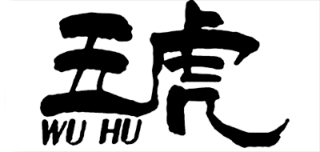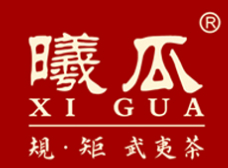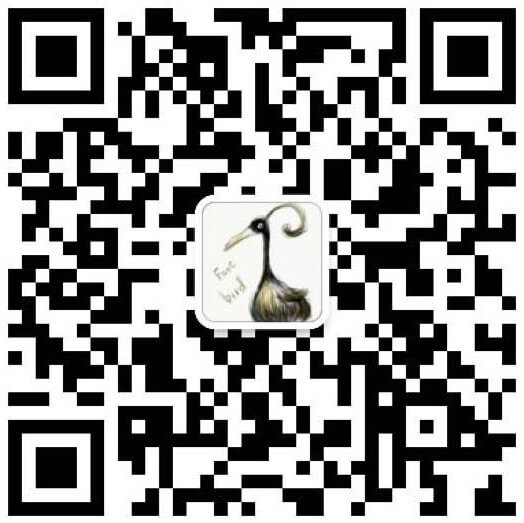 武夷山大红袍在茶叶行业中的票数:469
武夷山大红袍在茶叶行业中的票数:469
【武夷山大红袍是哪个国家的品牌?】
外推网助力武夷山大红袍品牌出海!将品牌入驻外推网,定制武夷山大红袍品牌推广信息,可以显著提高武夷山大红袍产品曝光,简直是跨境电商爆单神器!目前仅需1000元/年哦~
武夷大红袍,是中国茗苑中的奇葩,素有“茶中状元”之美誉,乃岩茶之王,堪称国宝,产于福建省武夷山,以精湛的工作特制而成。成品茶香气浓郁,滋味醇厚,有明显“岩韵”特征,饮后齿颊留香,被誉为“武夷茶王”。大红袍茶树为灌木型,为千年古树,九龙窠陡峭绝壁上仅存4株,产量稀少,被视为稀世之珍。
大红袍由来典故
关于大红袍名称的来历。明代有一上京赴考的举人路过武夷山时突然得病,腹痛难忍,巧遇一和尚取所藏大红袍茶泡予他喝,病痛即止。考中状元之后,前来致谢和尚,并用锡罐装取大红袍带回京城。状元回朝后,恰遇皇后得病,百医无效,便取出那罐茶叶献上,皇后饮后身体渐康,皇上大喜,赐红袍一件,命状元亲自前往九龙窠披在茶树上以示龙恩,同时派人看管,采制茶叶悉数进贡,不得私匿。从此,武夷岩茶大红袍就成为专供皇家享受的贡茶。
传说每年朝廷派来的官吏身穿大红袍,解袍挂在贡茶的树上,因此被称为大红袍。流传更广的是每当采茶之时,要焚香祭天,然后让猴子穿上红色的坎肩,爬到绝壁的茶树之上采摘茶叶。所以广东话把这种猴采茶称为"马骝茶"(广东人管猴子叫马骝)。正由于数量稀少,采摘困难,这种茶在市场上是价格昂贵的珍品。
武夷大红袍的品质特征
武夷大红袍的品质特征:外形条索紧结,色泽绿褐鲜润,冲泡后汤色橙黄明亮,叶片红绿相间,典型的叶片有绿叶红镶边之美感。大红袍品质最突出之处是香气馥郁有兰花香,香高而持久,“岩韵”明显。大红袍很耐冲泡,冲泡七、八次仍有香味。品饮“大红袍”茶,必须按“工夫茶”小壶小杯细品慢饮的程式,才能真正品尝到岩茶之颠的韵味。
注重:活、甘、清、香的特点。
品鉴要从几个方面来观察:外形、汤色、香气、滋味、冲泡次数和叶底等多个方面。其中以香气和滋味这两方面为重点。
香气:香气清爽,吸入后,深呼一口气从鼻中出,若能闻到幽幽香气的,其香品为上。熟香型(足焙火)的茶以果香以及奶油香为上。清香型(轻焙火)的茶以花香及蜜桃香为上。
滋味:入口甘爽滑顺者美,苦、涩、麻、酸者劣。茶水无质感,淡薄者为下品。苦涩味的轻重往往决定岩茶品质高低。冲泡次数,通常为八泡左右,超过八泡以上者更优。好的茶有“七泡八泡有余香,九泡十泡余味存。”的说法。
优质茶应具备:无明显苦涩,有质感(口中茶水感觉黏,有稠度),润滑,回甘显,回味足(初学者不易把握这一岩韵的特点)。
武夷大红袍的发展史
大红袍乃武夷岩茶之王,是乌龙茶中的极品。大红袍有着悠久的发展史,下面将对大红袍的发展史做一个简略地介绍。
1962年春,中国农科院茶叶研究所的科研人员从武夷山九龙窠剪了大红袍枝条带回杭州扦插繁育作为引种种在品种园内(1992年夏秋之交,又从武夷山市茶叶研究所名丛观察园中剪取很多武夷名丛,单丛等夏梢带回扦插,其中包括大红袍,标明来自武给山市茶叶研究所编号***大红袍号85年11月17日种)。
1964年春,福建省茶叶研究所培育室科研人员谢庆梓等二人带着单位的介绍信,来武夷山要剪取九龙窠大红袍枝条带回福安扦插繁育,来者是我同学,一路陪同到县政府办公室,县综合农场办理好手续,然后带到九龙窠,经看护人验证同意后,他们二个人就攀上大红袍茶地剪穗,待剪好下来时我开口向同学要几支扦插,没想到被婉言拒绝,说实话,当时对大红袍有兴趣,但并不在意,所以也不介意。
从1978年底到1982年,市茶叶研究所连续开展对武夷名丛进行挖掘、整理、繁育工作时,不知怎的也没把繁育九龙窠大红袍当成急事、大事来办,总认为大红袍茶树已在那里,有人看管,没问题,加上平时经常宣传大红袍,使之有可望而不可及的感觉,久而久之而敬而远之。
1985年11月,值参加省茶叶研究所四十周年所庆之际(这是一个难得的好机会)。我一到所里,就私下里向培育室主任黄修岩提出要求希望在回武夷山时带几株大红袍茶苗回武夷山栽种,同学说:“你已不在市茶叶研究所工作了,管理方便吗?”我说:“为了顾全大局,我会把它当作一件大事办好的。”也许同学出于同情,“那好吧,等你坐车回去时,我会把茶苗送到车门口给你带回。”当我约好回武夷山的时间后,第二天,黄修岩主任真的给我带了五支正本大红袍茶苗,包装得很隐蔽,千叮咛万嘱咐,一定要把它种好!那时我如获至宝,恨不得一步就到武夷山!最后于1985年11月17日完好地种在御茶园名丛观察园中。回想当年,不知当时为什么只从省所引回五株大红袍,而不多引些?很多很多年后才知道!这五株大红袍是“秘密”的引回,所以领导不知道,这不近似于偷吗?大红袍的神秘又一次演绎着神秘的故事。五株大红袍小苗在御茶园里茁壮成长着!它承担着加速繁育的任务,从上世纪八十年代末到九十年代初,所育苗木已在岩内外种植。从此,纯种正本大红袍的面积年年在扩大,由于大红袍的品质特征比较稳定,能被大多数人认识,所以种植面积必将不推而广(原来这五株大红袍现处于留养时期,即休养生息,供观赏)。武夷山大红袍上世纪60年代初神秘的走出九龙窠,等了20多年后,绕了一个大弯,又秘密的走回武夷山。回首40余年的不平凡经历,心里感慨万千。
英文翻译:Wuyi Dahongpao is a wonderful flower in China's Mingyuan. It is known as "the number one in tea". It is the king of rock tea. It can be called a national treasure. It is produced in Wuyi Mountain of Fujian Province. It is specially made with exquisite work. The finished tea has strong aroma, mellow taste, and obvious "rock rhyme" characteristics. After drinking, the tea leaves fragrance on the teeth and cheeks, which is known as the "king of Wuyi tea". Dahongpao tea tree is a shrubby tree with a history of one thousand years. There are only four plants on the steep cliff of Jiulong nest, which are rare in yield and are regarded as rare treasures. Dahongpao comes from the origin of the name of Dahongpao. In the Ming Dynasty, a man who went to Beijing for an examination suddenly fell ill when he passed Wuyi Mountain. He suffered from abdominal pain. He happened to meet a monk who took the tea of Dahongpao and made it for him to drink. The pain stopped. After passing the examination, he came to thank the monk and took the Dahongpao in tin cans back to the capital. After returning to the imperial court, the number one scholar happened to encounter the Queen's illness and the hundred doctors failed. He took out the pot of tea and offered it. After drinking it, the queen gradually recovered. The emperor was very happy and gave him a red robe. He ordered the number one scholar to go to jiulongke and drape it on the tea tree to show his gratitude. At the same time, he sent people to take care of it. He collected all the tea and paid tribute, not to hide it. Since then, Wuyi Rock Tea Dahongpao has become a tribute tea for Royal enjoyment. It is said that every year, the officials sent by the imperial court wear Dahongpao, which is hung on the tea tree, so it is called Dahongpao. It is more widely spread that when picking tea, we should burn incense to worship the heaven, and then let monkeys put on red scarves and climb to the tea tree on the cliff to pick tea. Therefore, this kind of monkey tea is called "monkey tea" in Cantonese. Because of the scarcity and the difficulty of picking, this kind of tea is an expensive treasure in the market. The quality characteristics of Wuyi Dahongpao the quality characteristics of Wuyi Dahongpao are as follows: the shape is tight, the color is green, brown and fresh, the soup color is orange, yellow and bright after brewing, the leaves are red and green, and the typical leaves have the beauty of green leaves and red border. The most outstanding quality of Dahongpao is that it has a strong fragrance of orchid, which is high and long-lasting, "rock rhyme" is obvious. Dahongpao is very resistant to brewing, and it still has fragrance after seven or eight times of brewing. To taste "Dahongpao" tea, we must follow the procedure of "Gongfu tea" small pot, small cup and slow drinking, so as to really taste the charm of rock tea. Attention: live, sweet, clear and fragrant. The taste should be observed from several aspects: appearance, soup color, aroma, taste, brewing times and leaf base. It focuses on aroma and taste. Aroma: the fragrance is fresh. After inhalation, take a deep breath out of the nose. If you can smell the faint fragrance, the fragrance is superior. Ripe tea (full roasted) is mainly fruity and creamy. The fragrance type (light roasted) tea is based on the fragrance of flowers and peaches. Taste: sweet, smooth and beautiful, bitter, astringent, numb and sour. The tea has no texture, the weak is inferior. The bitterness often determines the quality of rock tea. The number of bubbles, usually about eight bubbles, more than eight bubbles is better. Good tea has "seven bubbles and eight bubbles have aftertaste, nine bubbles and ten bubbles have aftertaste." The saying. High quality tea should have: no obvious bitterness, texture (the tea in the mouth feels sticky, has consistency), lubrication, sweet back, full aftertaste (beginners are not easy to grasp the characteristics of this rock rhyme). The development history of Wuyi Dahongpao, the king of Wuyi rock tea, is the best of Oolong tea. Dahongpao has a long history of development. Here is a brief introduction to the history of Dahongpao. In the spring of 1962, researchers of Tea Research Institute of Chinese Academy of Agricultural Sciences cut Dahongpao branches from jiulongke of Wuyishan Mountain and brought them back to Hangzhou for cutting and breeding as an introduction in the variety Garden (at the turn of summer and autumn in 1992, they also cut many famous Wuyi clusters from the observation Garden of famous clusters of Wuyishan Tea Research Institute, including Dahongpao, indicating that they came from Wuyishan Tea Research Institute No. * * * Dahongpao No., November 17, 1985). In the spring of 1964, Xie Qingzi and other researchers from the cultivation Office of Fujian tea research institute came to Wuyishan with a letter of introduction. They wanted to cut the branches of the Dahongpao of jiulongke and bring them back to Fu'an for cutting and breeding. My classmates accompanied them all the way to the county government office and the county comprehensive farm to go through the formalities. Then they took them to jiulongke. With the verification and approval of the caretaker, they climbed the Dahong mountain I asked my classmates for some cuttings when I finished cutting. I didn't expect to be politely rejected. To be honest, I was interested in Dahongpao at that time, but didn't care about it, so I didn't mind. From the end of 1978 to 1982, when the municipal Tea Research Institute carried out the excavation, sorting and breeding of Wuyi famous clusters, it somehow failed to take the breeding of jiulongke Dahongpao as an urgent and important matter. It always believed that Dahongpao tea tree was there, looked after by some people, no problem. In addition, it often publicized Dahongpao, making it have a sense of expectation and inaccessibility, and respected for a long time Far away. In November 1985, it was a rare opportunity to participate in the celebration of the 40th anniversary of the provincial Tea Research Institute. As soon as I arrived at the Institute, I asked Huang Xiuyan, the director of the cultivation department, privately to take some Dahongpao tea seedlings back to Wuyishan for planting when I returned to Wuyishan. My classmates said, "you are no longer working in the municipal Tea Research Institute. Is it convenient for management?" I said, "in order to take the overall situation into consideration, I will treat it as a major event." Perhaps out of sympathy, "well, when you go back by car, I will take the tea seedling to the door of the car and bring it back to you." When I made an appointment to return to Wuyi Mountain, the next day, director Huang Xiuyan really brought me five original big black robe tea seedlings, which were packed in a very hidden way. He urged me to plant them well! At that time, if I got the most treasure, I would like to go to Wuyi mountain in one step! Finally, on November 17, 1985, I planted them in the imperial tea garden Mingcong observation garden. In retrospect, I don't know why I only brought back five dahongpaos from the province, but not more. I didn't know for many years! These five dahongpaos are "secret" lead back, so the leaders don't know, isn't it similar to stealing? The mystery of Dahongpao once again deduces the mysterious story. Five Dahongpao seedlings are thriving in the imperial tea garden! It undertakes the task of accelerating breeding. From the late 1980s to the early 1990s, the seedlings have been planted inside and outside the rock. Since then, the area of pure original Dahongpao has been expanding year by year. Because the quality characteristics of Dahongpao are relatively stable and can be recognized by most people, the planting area will not be expanded (the original five Dahongpao are in the period of keeping, that is, recuperation, for viewing). Wuyishan Dahongpao left the Jiulong nest in the early 1960s. After more than 20 years, she made a big turn and went back to Wuyishan secretly. Looking back on the extraordinary experience of more than 40 years, I am filled with emotion.
本文链接: https://www.waitui.com/brand/86bda6ccf.html 联系电话:请联系客服添加 联系邮箱:请联系客服添加

















 浙公网安备 33011802001999号
浙公网安备 33011802001999号
